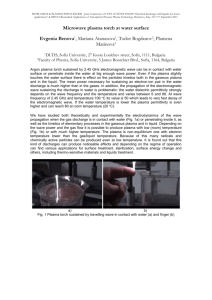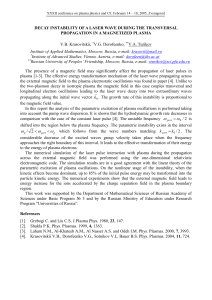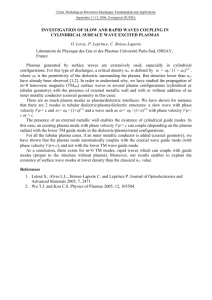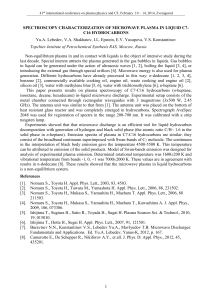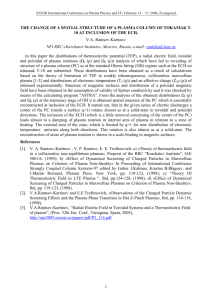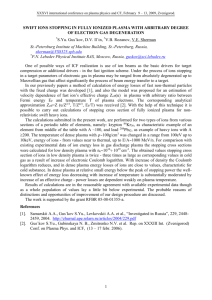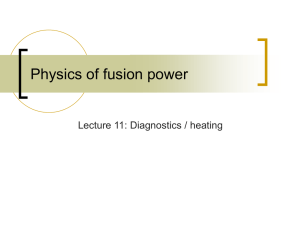EMPLOYMENT OFFER LETTER (SPECIFIED TERM OF
advertisement
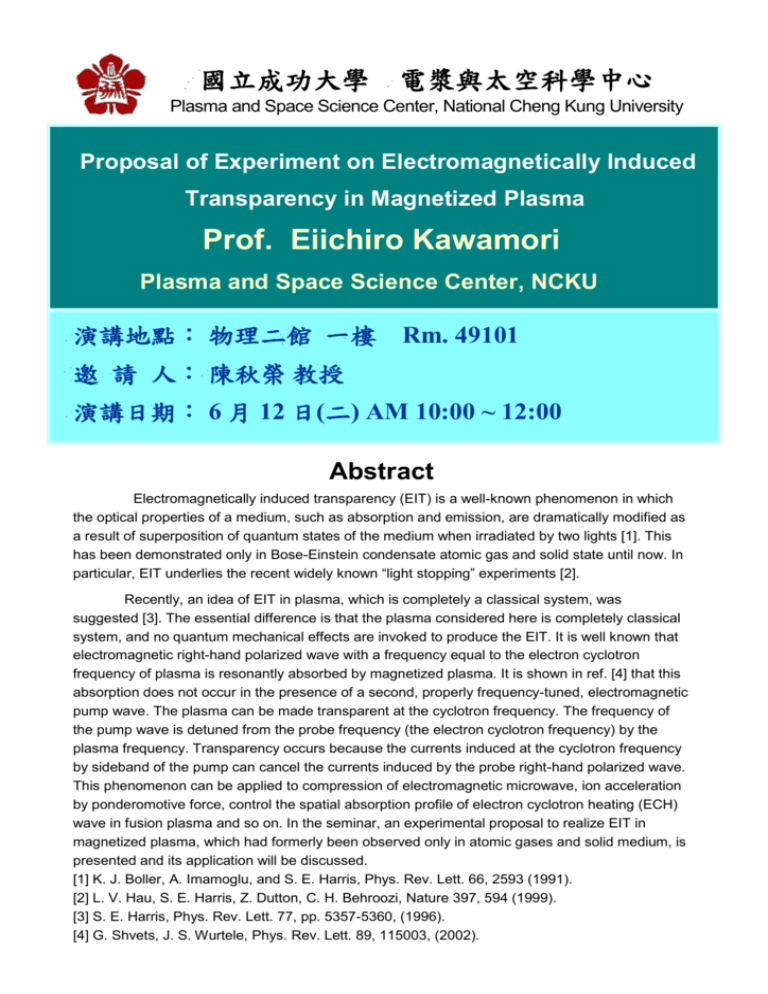
國立成功大學 電漿與太空科學中心 Plasma and Space Science Center, National Cheng Kung University Proposal of Experiment on Electromagnetically Induced Transparency in Magnetized Plasma Prof. Eiichiro Kawamori Plasma and Space Science Center, NCKU 演講地點: 物理二館 一樓 Rm. 49101 邀 請 人: 陳秋榮 教授 演講日期: 6 月 12 日(二) AM 10:00 ~ 12:00 Abstract Electromagnetically induced transparency (EIT) is a well-known phenomenon in which the optical properties of a medium, such as absorption and emission, are dramatically modified as a result of superposition of quantum states of the medium when irradiated by two lights [1]. This has been demonstrated only in Bose-Einstein condensate atomic gas and solid state until now. In particular, EIT underlies the recent widely known “light stopping” experiments [2]. Recently, an idea of EIT in plasma, which is completely a classical system, was suggested [3]. The essential difference is that the plasma considered here is completely classical system, and no quantum mechanical effects are invoked to produce the EIT. It is well known that electromagnetic right-hand polarized wave with a frequency equal to the electron cyclotron frequency of plasma is resonantly absorbed by magnetized plasma. It is shown in ref. [4] that this absorption does not occur in the presence of a second, properly frequency-tuned, electromagnetic pump wave. The plasma can be made transparent at the cyclotron frequency. The frequency of the pump wave is detuned from the probe frequency (the electron cyclotron frequency) by the plasma frequency. Transparency occurs because the currents induced at the cyclotron frequency by sideband of the pump can cancel the currents induced by the probe right-hand polarized wave. This phenomenon can be applied to compression of electromagnetic microwave, ion acceleration by ponderomotive force, control the spatial absorption profile of electron cyclotron heating (ECH) wave in fusion plasma and so on. In the seminar, an experimental proposal to realize EIT in magnetized plasma, which had formerly been observed only in atomic gases and solid medium, is presented and its application will be discussed. [1] K. J. Boller, A. Imamoglu, and S. E. Harris, Phys. Rev. Lett. 66, 2593 (1991). [2] L. V. Hau, S. E. Harris, Z. Dutton, C. H. Behroozi, Nature 397, 594 (1999). [3] S. E. Harris, Phys. Rev. Lett. 77, pp. 5357-5360, (1996). [4] G. Shvets, J. S. Wurtele, Phys. Rev. Lett. 89, 115003, (2002).
